Region
Crash of a Beechcraft 3NMT Expeditor in Bastia
Date & Time:
Sep 14, 2021 at 1025 LT
Registration:
G-BKGL
Survivors:
Yes
Schedule:
Bastia - Bastia
MSN:
A-764
YOM:
1952
Crew on board:
1
Crew fatalities:
Pax on board:
2
Pax fatalities:
Other fatalities:
Total fatalities:
0
Captain / Total hours on type:
15.00
Circumstances:
On August 19, 2021, the airplane was acquired by a British citizen in Saudi Arabia and repatriated to UK via Egypt, Crete, Greece, Croatia and France. On August 25, en route from Croatia to France, the right engine suffered a loss of hydraulic pressure after the cylinder n°5 failed. The crew diverted to Bastia-Poretta Airport where he landed safely. On September 13, the cylinder n°5 was replaced by a qualified technician and a post maintenance control flight was scheduled for September 14, despite the pilot was slightly ill. The airplane departed Bastia-Poretta Airport at 1010LT and six minutes later, the pilot informed ATC that the control was completed and that he wanted to return to the airport. Due to departure traffic, the pilot was asked to fly along the mountain for a left hand circuit to land on runway 34. Seven minutes later, the right engine failed, followed 20 seconds later by a loss of power on the left engine. With a rate of descent between 900 and 1,500 feet per minute, the pilot was unable to reach the airport and attempted an emergency landing when the airplane impacted trees and crashed in an orchard, bursting into flames. All three occupants escaped the airplane by their own and were injured. The airplane was totally destroyed by a post crash fire.
Probable cause:
Most likely, the fuel selectors were in the 'Nose' position at start-up. The pilot thought that the main tanks were selected. He probably took off and flew on the 'Nose' tank, common to both engines, without realizing it. At the end of the downwind leg, having probably consumed all the fuel available in the 'Nose' tank, the right engine stopped. In this hypothesis, the left engine would also have suffered the effects of a fuel supply failure. This hypothesis is consistent with the observation of the position of the left and right fuel selectors on 'Nose' in the wreckage, and the pilot's initial testimony that the selectors had not been manipulated. The pilot, who was no longer able to hold the landing and was too far from the runway to reach it, was unable to avoid colliding with trees during the forced landing. His attention was focused on the aircraft's path, and he didn't think to switch off the battery, magnetos or the fuel supply system. During the collision with trees, the right engine and wing were torn off, and a fire broke out.
It is considered that the following factors may have contributed to the probable selection of fuel selectors on the 'Nose' instead of the main tanks:
- The pilot's lack of experience on type, which could have exposed him to a selection error and which was not conducive to his detection during the pre-start-up and pre-takeoff checks;
- The ergonomics of the fuel tank selector levers, which could have led him to think that they were positioned on 'Front';
- The pilot's state of health and fatigue at the time he undertook the flight, which was likely to have impaired his cognitive abilities.
- A form of objective-destination linked to the accumulated delay in repairing the cylinder may have contributed to the pilot's decision not to postpone the flight, despite his altered general state;
- A misrepresentation of the position of the fuel selectors may have led the pilot not to change their position when the engine problem occurred.
It is considered that the following factors may have contributed to the probable selection of fuel selectors on the 'Nose' instead of the main tanks:
- The pilot's lack of experience on type, which could have exposed him to a selection error and which was not conducive to his detection during the pre-start-up and pre-takeoff checks;
- The ergonomics of the fuel tank selector levers, which could have led him to think that they were positioned on 'Front';
- The pilot's state of health and fatigue at the time he undertook the flight, which was likely to have impaired his cognitive abilities.
- A form of objective-destination linked to the accumulated delay in repairing the cylinder may have contributed to the pilot's decision not to postpone the flight, despite his altered general state;
- A misrepresentation of the position of the fuel selectors may have led the pilot not to change their position when the engine problem occurred.
Final Report:
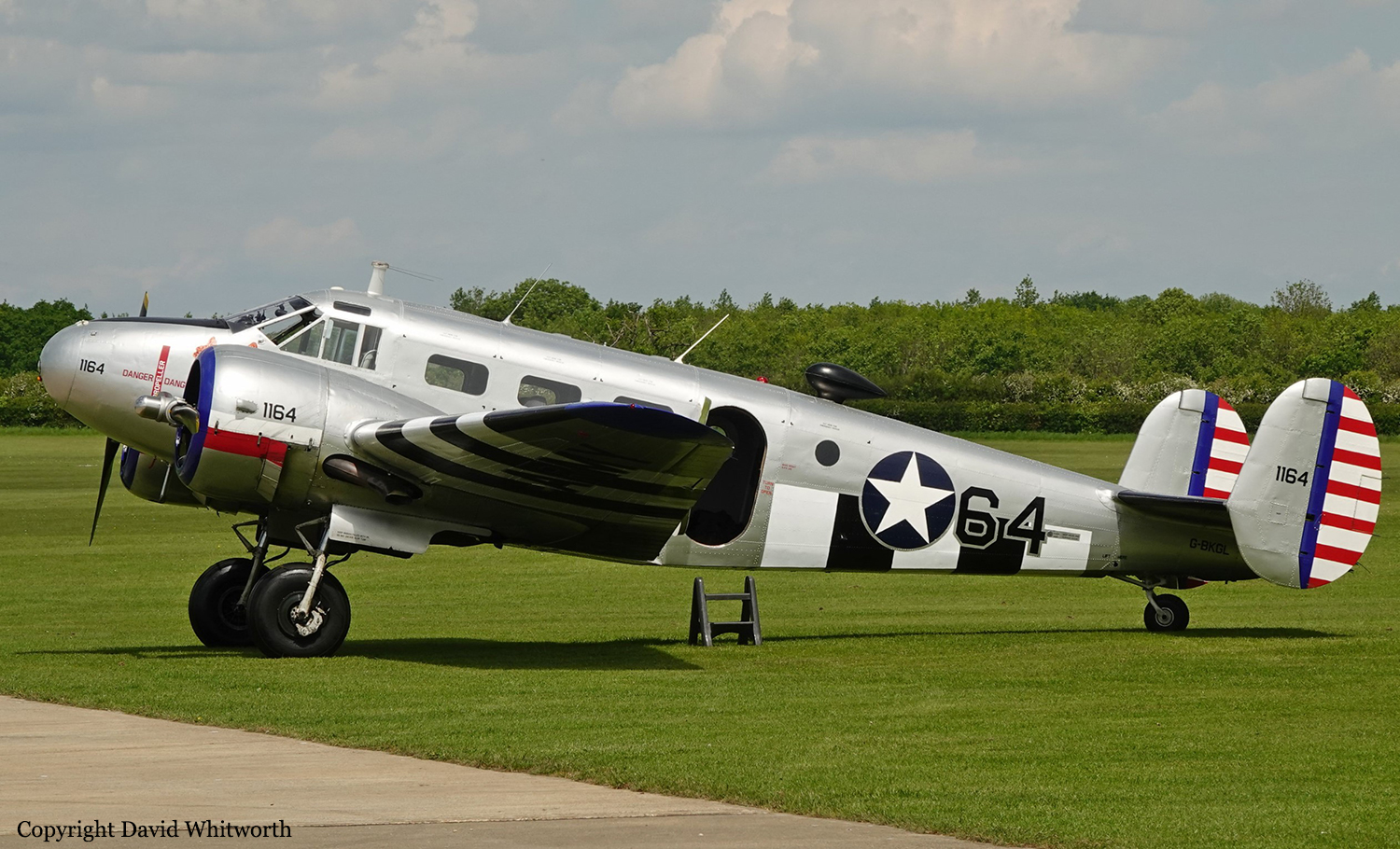


Crash of a Piper PA-46-350P Malibu Mirage in Courchevel: 1 killed
Date & Time:
Aug 6, 2021 at 1144 LT
Registration:
F-HYGA
Survivors:
Yes
Schedule:
Cannes - Courchevel
MSN:
46-36483
YOM:
2010
Crew on board:
1
Crew fatalities:
Pax on board:
2
Pax fatalities:
Other fatalities:
Total fatalities:
1
Captain / Total hours on type:
80.00
Circumstances:
The single engine airplane departed Cannes-Mandelieu Airport on a private flight to Courchevel with two passengers and one pilot on board. The goal of the flight was to maintain the validity of the pilot to access to the Courchevel Altiport. Following a right hand base leg, the pilot configured the airplane to land on runway 22. On final, the altimeter showed an altitude close to the runway threshold, and the aircraft was levelled off to the runway threshold. A few seconds before landing, the stall warning sounded, the engine power was increased and then reduced completely. The undercarriage impacted an embankment above the runway threshold and were torn off. The airplane lifted a bit then fell back onto the runway. It slid for about 100 metres before coming to rest. A fire erupted on the right side of the fuselage. The pilot and the front passenger exited the aircraft through the rear door and managed to extract the rear passenger, who was unconscious and died a few minutes later.
Probable cause:
The accident was the consequence of a premature descent during the approach. The pilot started the descent on the base leg, whereas mountain landing practices call for a descent on final approach after interception of the descent plan, combined with an erroneous assessment of the aircraft's position in relation to the final descent plan. Investigations revealed that the aircraft was flying at an altitude of 6,600 feet during the last turn, about 400 feet below the altitude indicated on the approach chart.
The following factors may have contributed to the accident:
- The period of training received by the pilot was probably insufficient;
- A lack of landing experience at Courchevel;
- A misunderstandings between the pilot and the passenger seated on the right about his role during the flight, himself being an airline pilot and instructor.
The following factors may have contributed to the accident:
- The period of training received by the pilot was probably insufficient;
- A lack of landing experience at Courchevel;
- A misunderstandings between the pilot and the passenger seated on the right about his role during the flight, himself being an airline pilot and instructor.
Final Report:
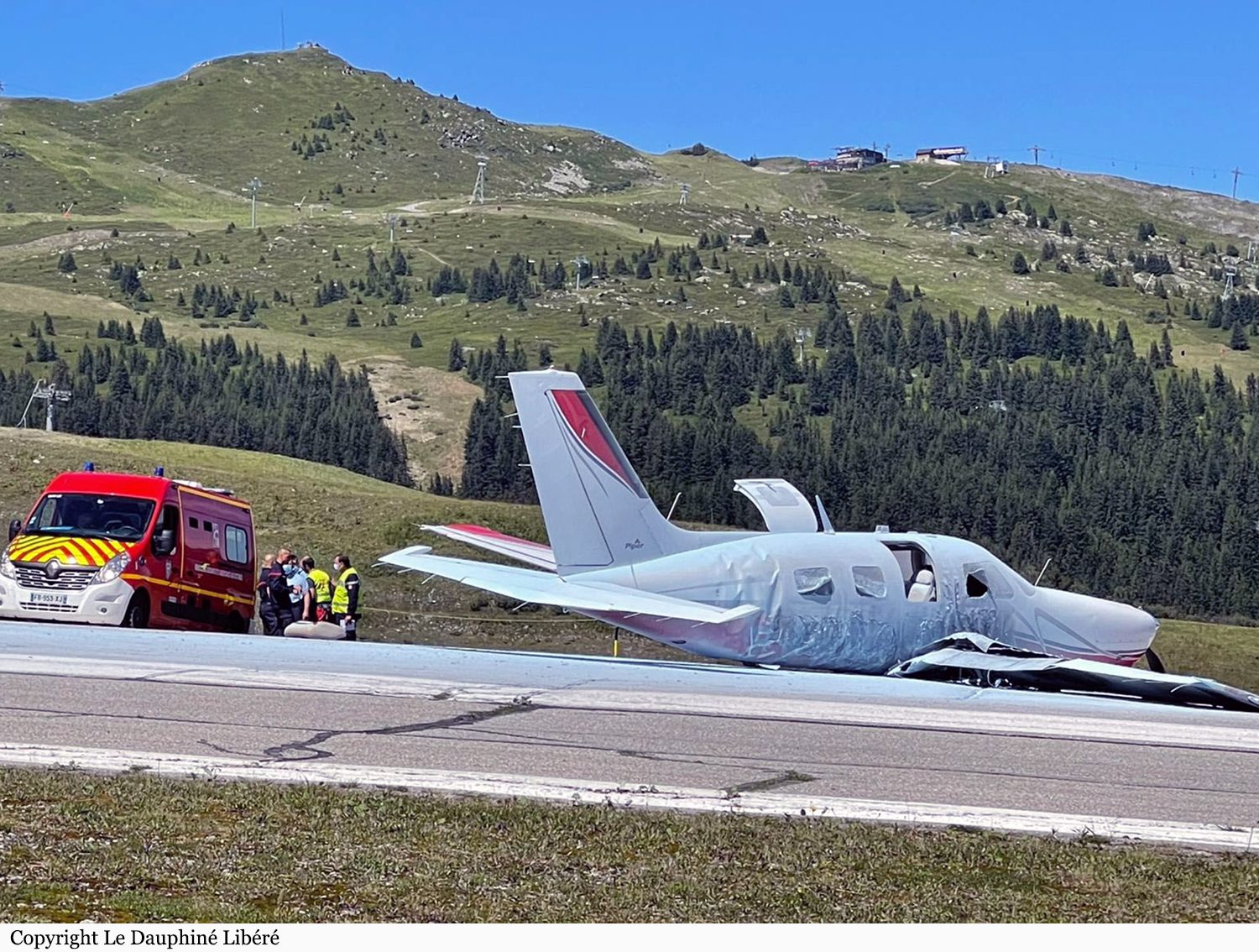
Crash of a Cessna T303 Crusader in Annecy
Date & Time:
Dec 4, 2020 at 1550 LT
Registration:
HB-LUV
Survivors:
Yes
Schedule:
Marseille - Annecy
MSN:
303-00058
YOM:
1981
Crew on board:
1
Crew fatalities:
Pax on board:
2
Pax fatalities:
Other fatalities:
Total fatalities:
0
Circumstances:
The twin engine airplane departed Marseille-Provence Airport on a private flight to Annecy. En route, while cruising at FL110, the pilot was informed about the weather conditions at destination with a braking coefficient considered as medium due to a wet runway. After being cleared to land on runway 04, the pilot continued the approach but landed half way down the runway at a speed of 119 knots. After touchdown, he initiated the braking procedure but the airplane suffered an aquaplaning and was unable to stop within the remaining distance. It overran, impacted an embankment, went trough a fence and came to rest on a road. While both passengers aged 26 and 28 were slightly injured, the pilot aged 70 was seriously injured. The aircraft was destroyed.
Probable cause:
The accident was the result of the combination of the following factors:
- The pilot initiated the descent too late, causing the aircraft to approach well above the glide,
- The pilot continued the approach with an unstabilized airplane nor in speed nor on the glide,
- The airplane landed halfway down the runway, reducing the landing distance available,
- The speed upon touchdown was recorded at 119 knots, 30 knots above the recommended speed in the flight manual,
- The braking coefficient was considered as medium because of a wet runway surface,
- The airplane suffered an aquaplaning effect when the pilot initiated the braking procedure.
- The pilot initiated the descent too late, causing the aircraft to approach well above the glide,
- The pilot continued the approach with an unstabilized airplane nor in speed nor on the glide,
- The airplane landed halfway down the runway, reducing the landing distance available,
- The speed upon touchdown was recorded at 119 knots, 30 knots above the recommended speed in the flight manual,
- The braking coefficient was considered as medium because of a wet runway surface,
- The airplane suffered an aquaplaning effect when the pilot initiated the braking procedure.
Final Report:

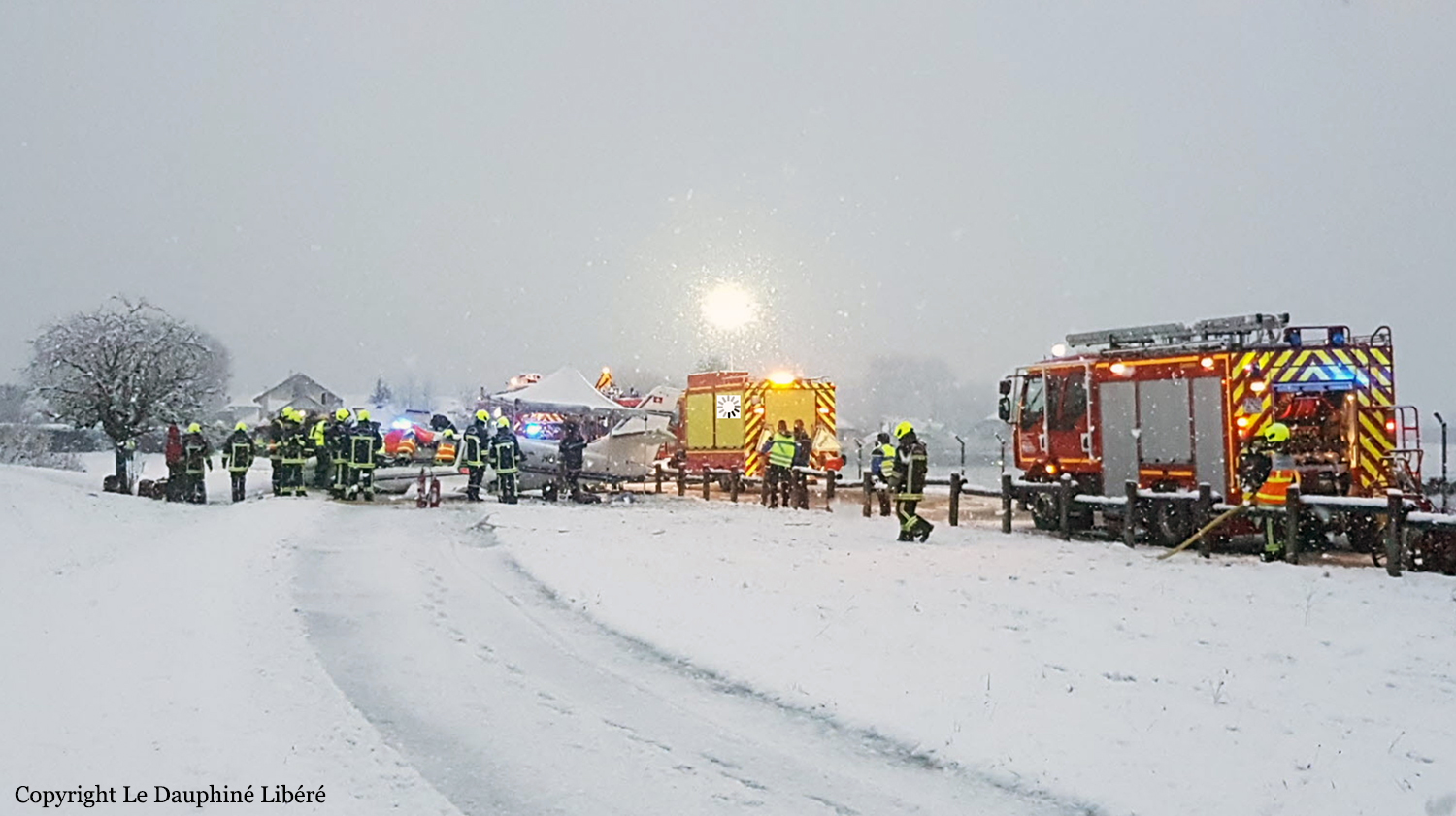

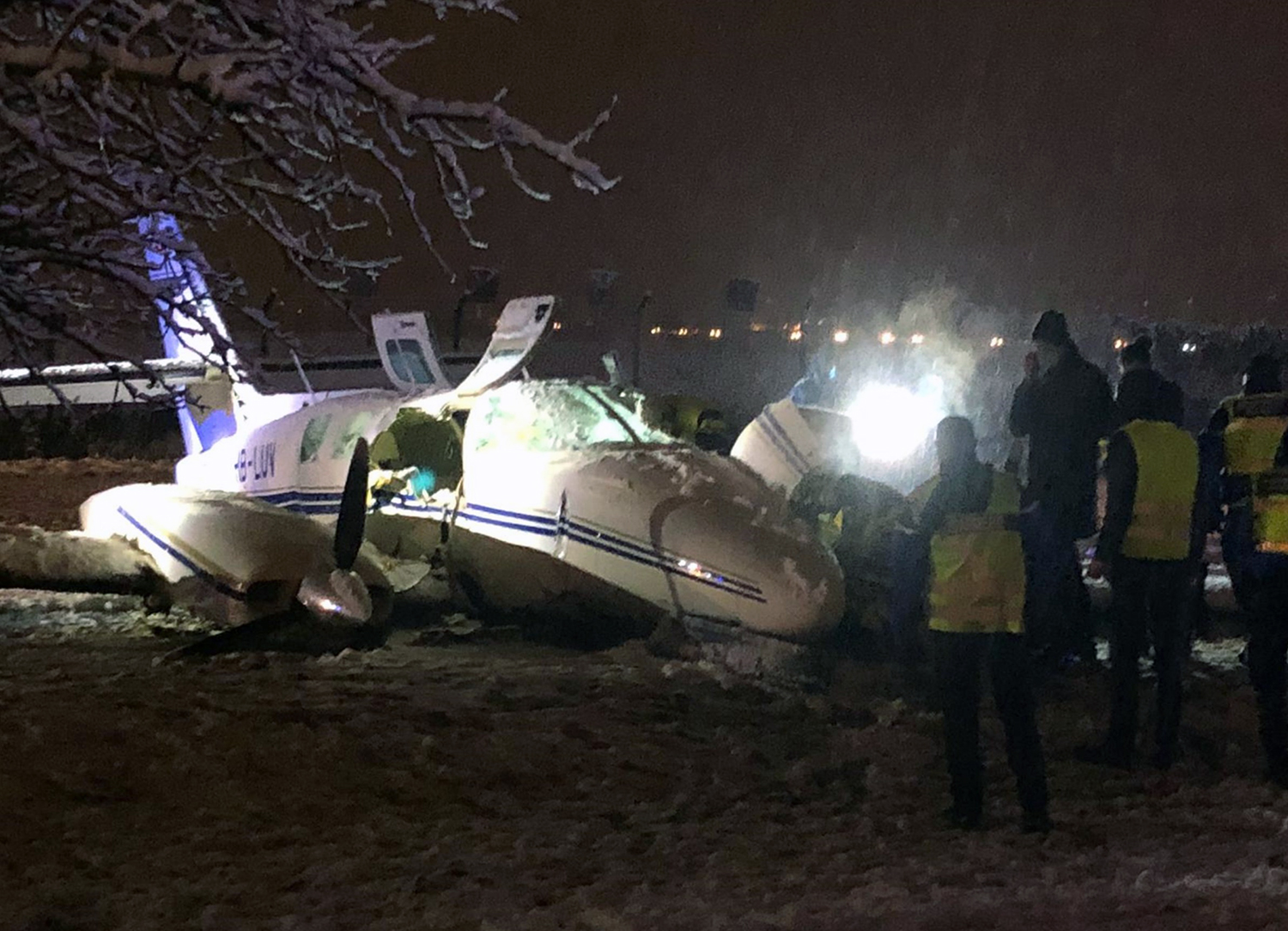
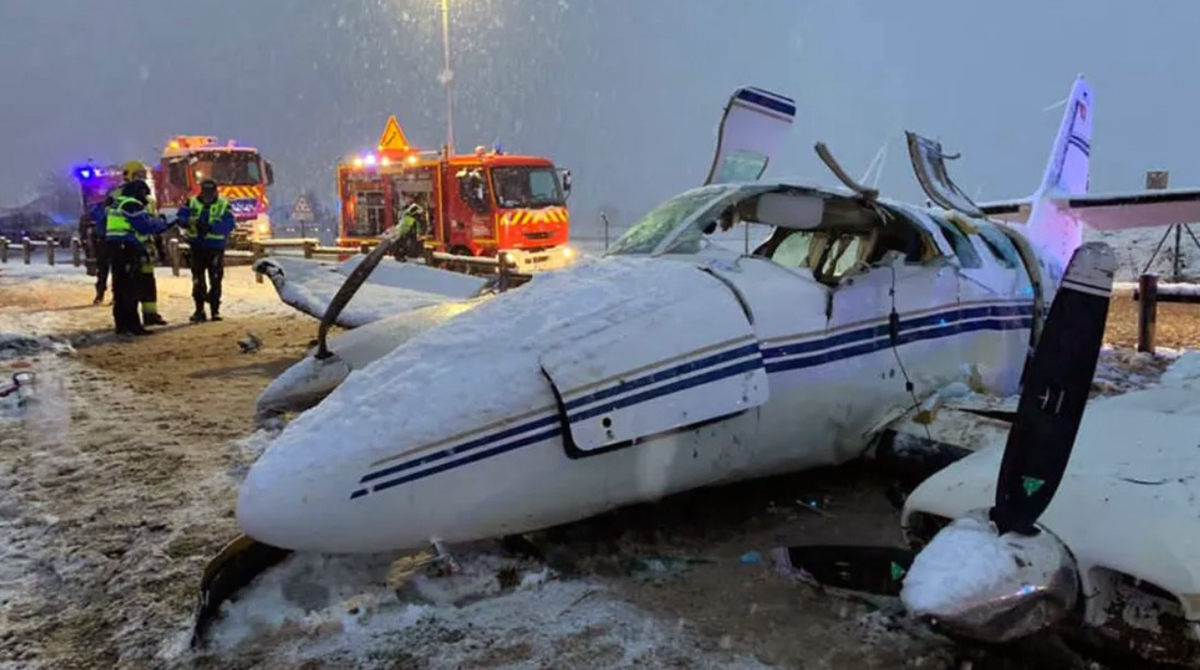

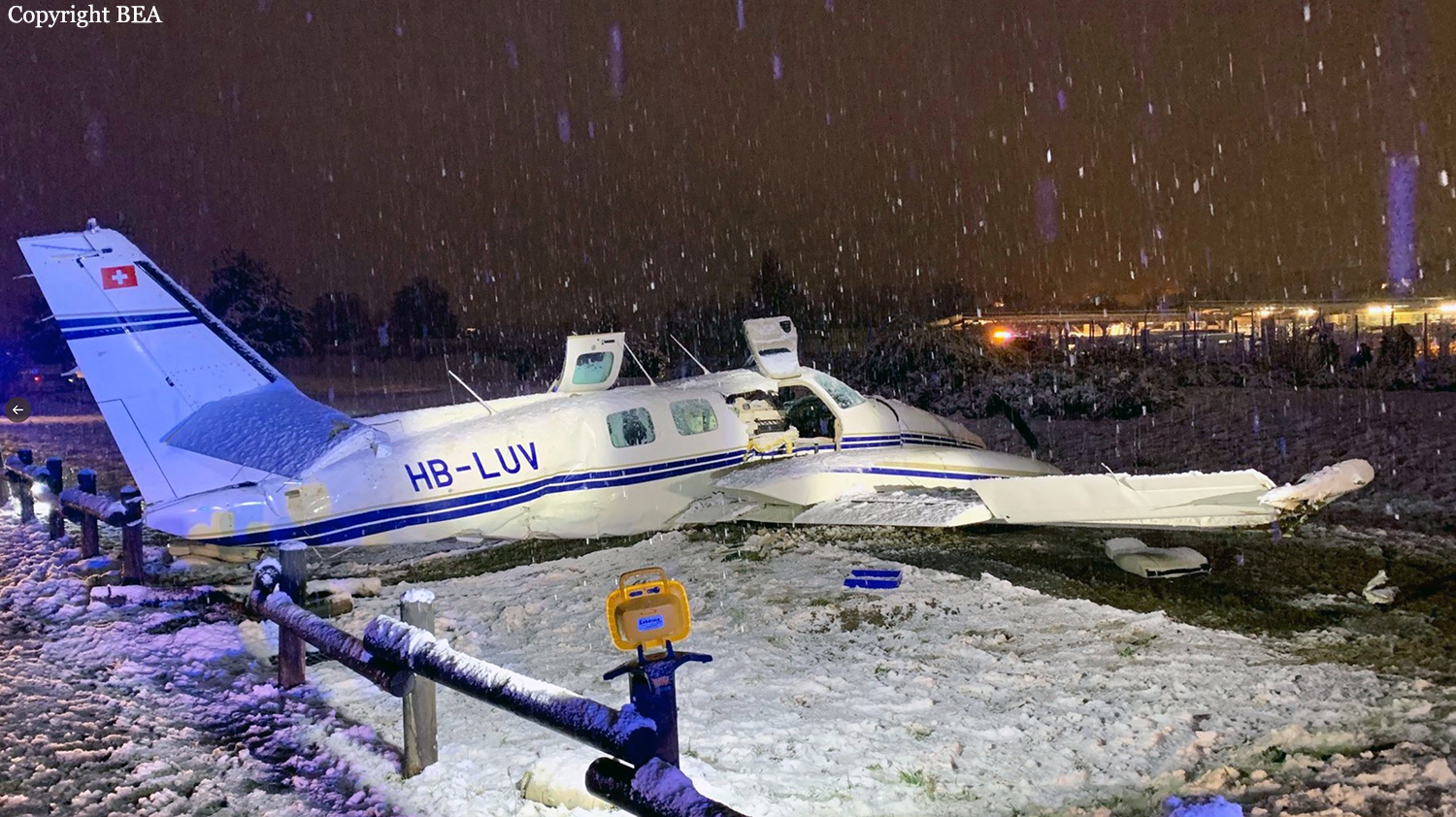
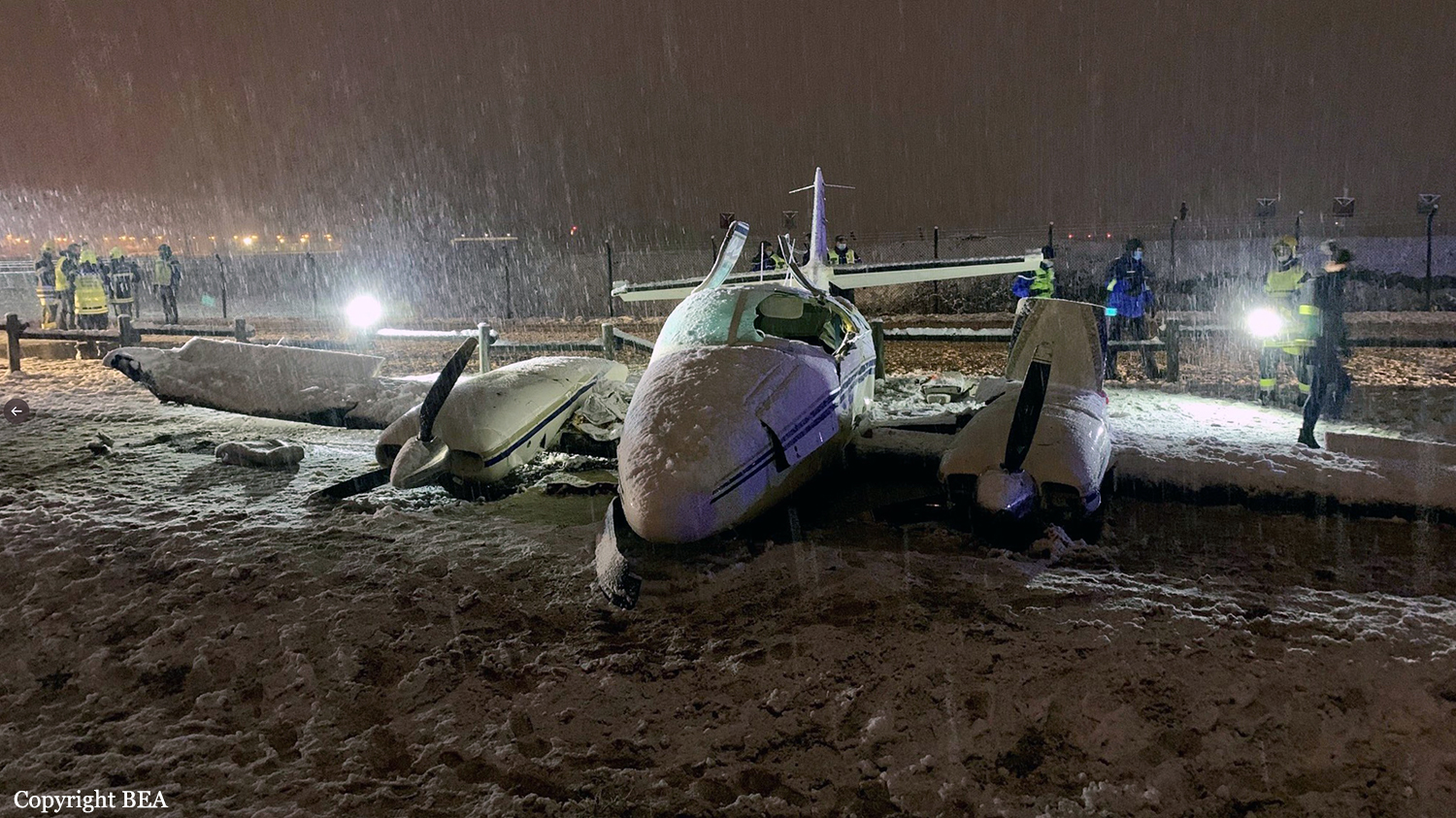

Crash of a Piper PA-46R-350T Matrix in Vannes
Date & Time:
Oct 5, 2020 at 1415 LT
Registration:
N898BB
Survivors:
Yes
Schedule:
Vannes - La Môle
MSN:
46-92057
YOM:
2008
Crew on board:
1
Crew fatalities:
Pax on board:
1
Pax fatalities:
Other fatalities:
Total fatalities:
0
Captain / Total hours on type:
565.00
Circumstances:
On the morning of the day of the accident, the pilot, accompanied by a passenger, flew under IFR flight mode from La Môle (83) to Quiberon (56). The flight took 3 hours and 40 minutes and the return was scheduled in the afternoon. After landing in Quiberon, the pilot learned that there was no possibility to refuel with AVGAS, information that was not specified by NOTAM. The pilot then decided to refuel at Vannes-Meucon Airport before leaving to St Tropez-La Môle. He said he was upset by this situation and by the bad weather conditions in the area. During the pre-flight visit to Quiberon, the pilot added oil. He indicates that he also carried out a pre-flight inspection before takeoff from Vannes. During the takeoff roll from runway 22 at Vannes-Meucon Airport, the rotation took place in the first third of the runway. Just after liftoff, he saw the engine cowling open. He immediately thaught he forgot to tighten the dipstick and decided to abort the takeoff and landed on the remaining runway. The runway being long, he believed he can stop before the runway end. He put the power levers in the "full, reduced and choke" position and tried to land the plane quickly. As the aircraft already reached a high speed, it landed 200 metres short of runway end and deviated longitudinally and crossed the runway end safety area, known as RESA. It came to a stop a 100 metres further on an embankment. The left wing was partially torn off and the aircraft was damaged beyond repair. There was no fire. Both occupants escaped uninjured.
Final Report:
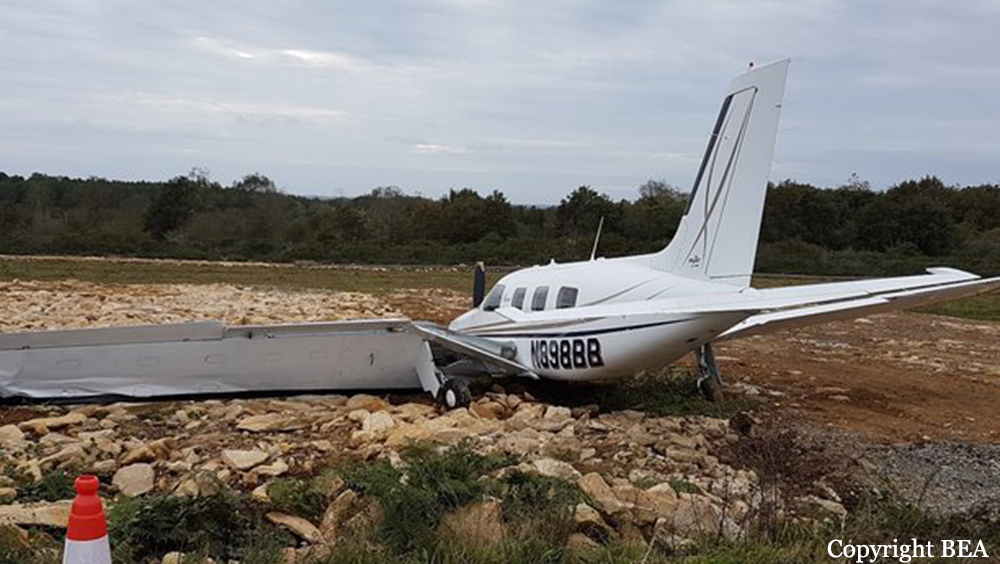

Crash of a Cessna 340A in Orléans
Date & Time:
Aug 10, 2020 at 1355 LT
Registration:
N413JF
Survivors:
Yes
Schedule:
Perpignan – Orléans
MSN:
340A-0746
YOM:
1979
Crew on board:
1
Crew fatalities:
Pax on board:
1
Pax fatalities:
Other fatalities:
Total fatalities:
0
Captain / Total hours on type:
41.00
Circumstances:
Then twin engine airplane departed Perpignan-La Llabanère Airport on a private flight to Orléans, carrying one passenger and one pilot. On final approach to Orléans-Loiret Airport (ex Saint-Denis-de-l’Hôtel), the pilot encountered a loss of power on the left engine. He attempted an emergency landing when the airplane impacted trees and crash landed in a wooded area located about 3 km short of runway 23, bursting into flames. Both occupants escaped uninjured while the airplane was totally destroyed by a post crash fire.
Probable cause:
The exact cause of the loss of power on the left engine could not be determined. The pilot, concentrating on monitoring the approach parameters, did not immediately realize the left engine malfunction. He noticed that the aircraft's rate of descent was too high to follow the standard approach slope. The pilot first attempted to go around and reconfigured the aircraft to do so by retracting the landing gear and flaps. In spite of these actions, the pilot noticed that the power delivered by the aircraft's engines did not allow him to recover the plane and understood, by being aware of the action of his right foot on the rudder pedal, that the power delivered by the left engine was abnormally low. Given the low height of the plane at the time of this observation, the pilot decided to land in the country. Contributing to the high rate of descent after the occurrence of the left engine malfunction was the fact that the drags were extended at the time the engine power decreased and the fact that the left propeller probably windmilling until the landing.
Final Report:
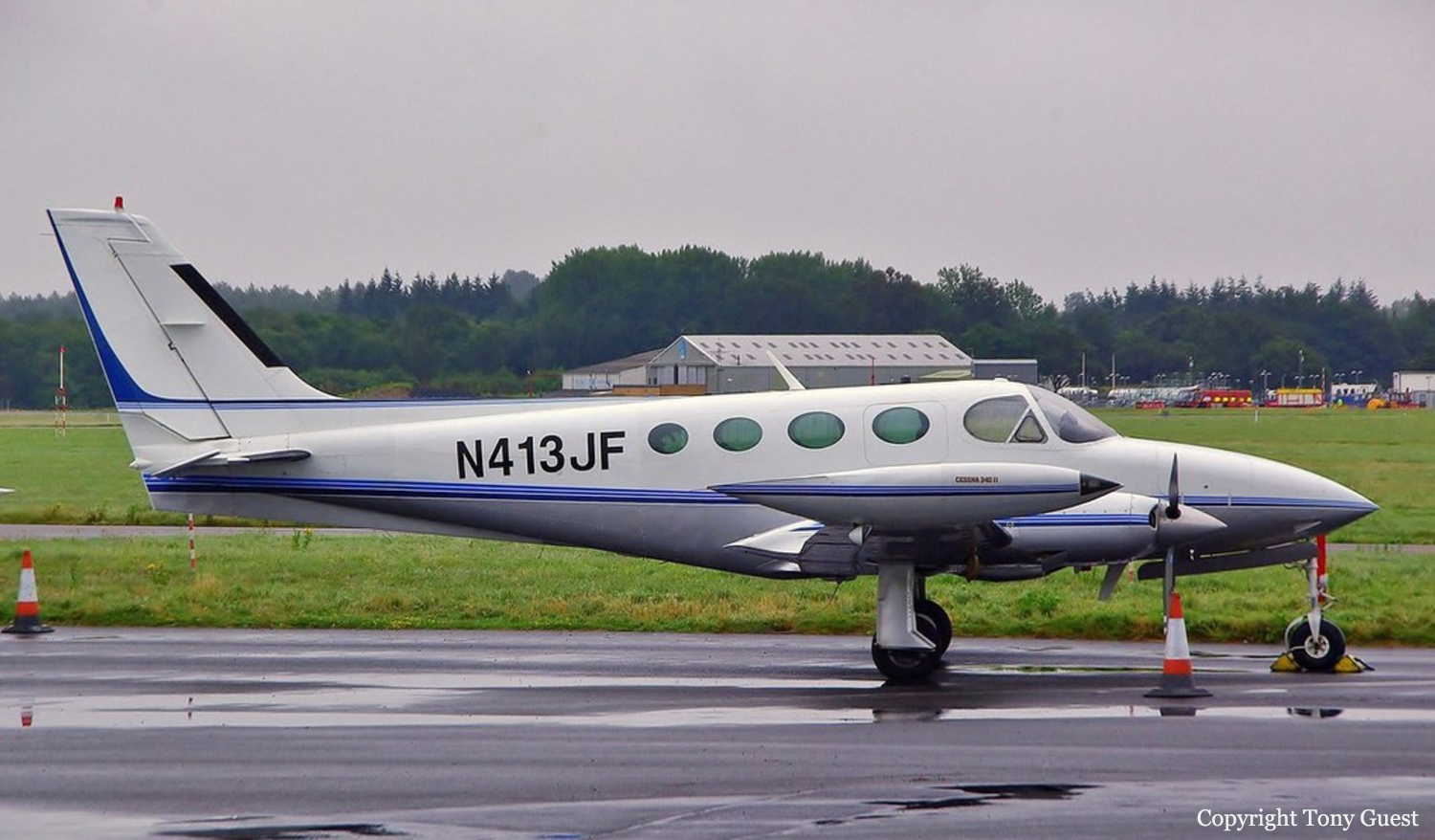
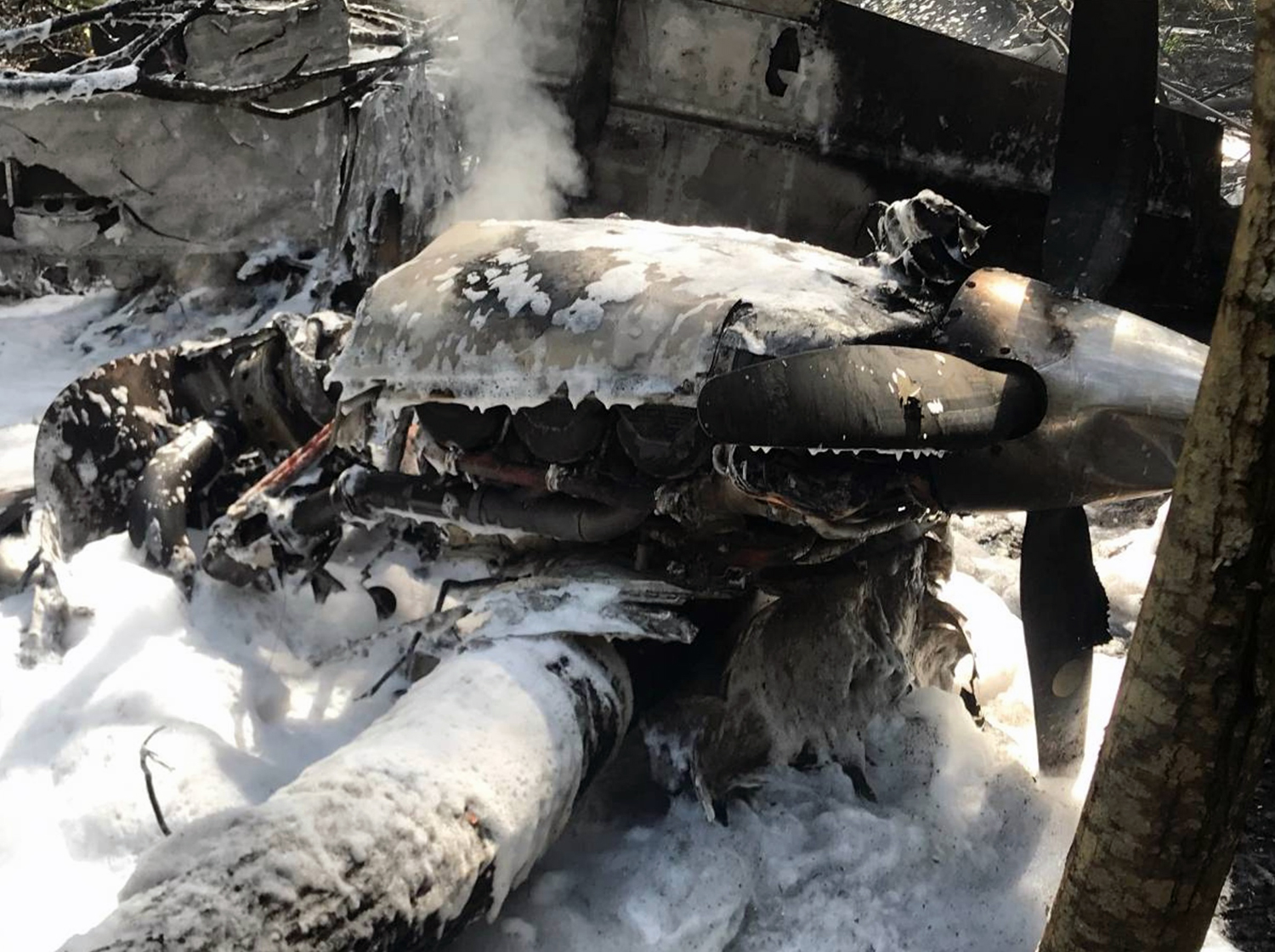
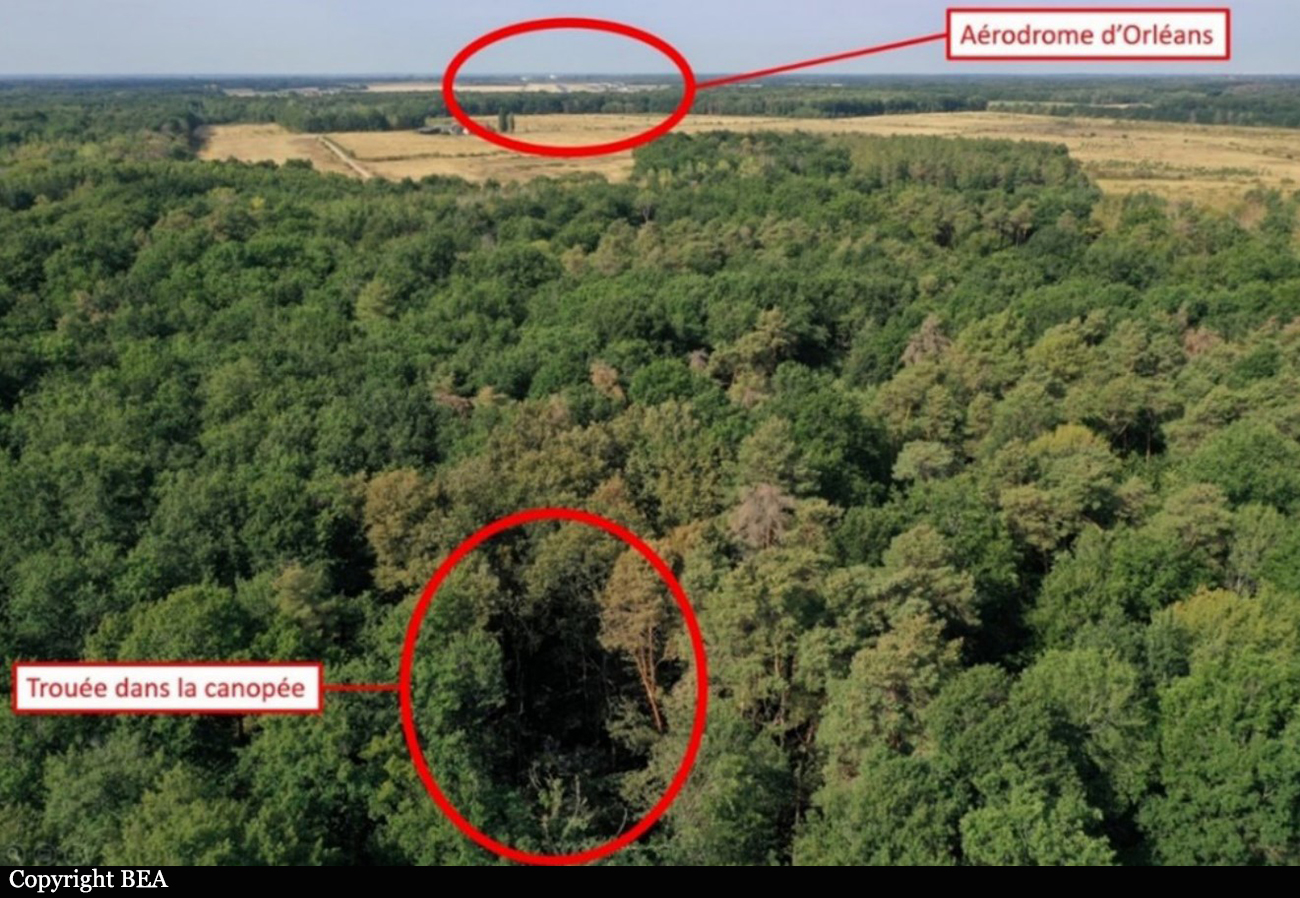
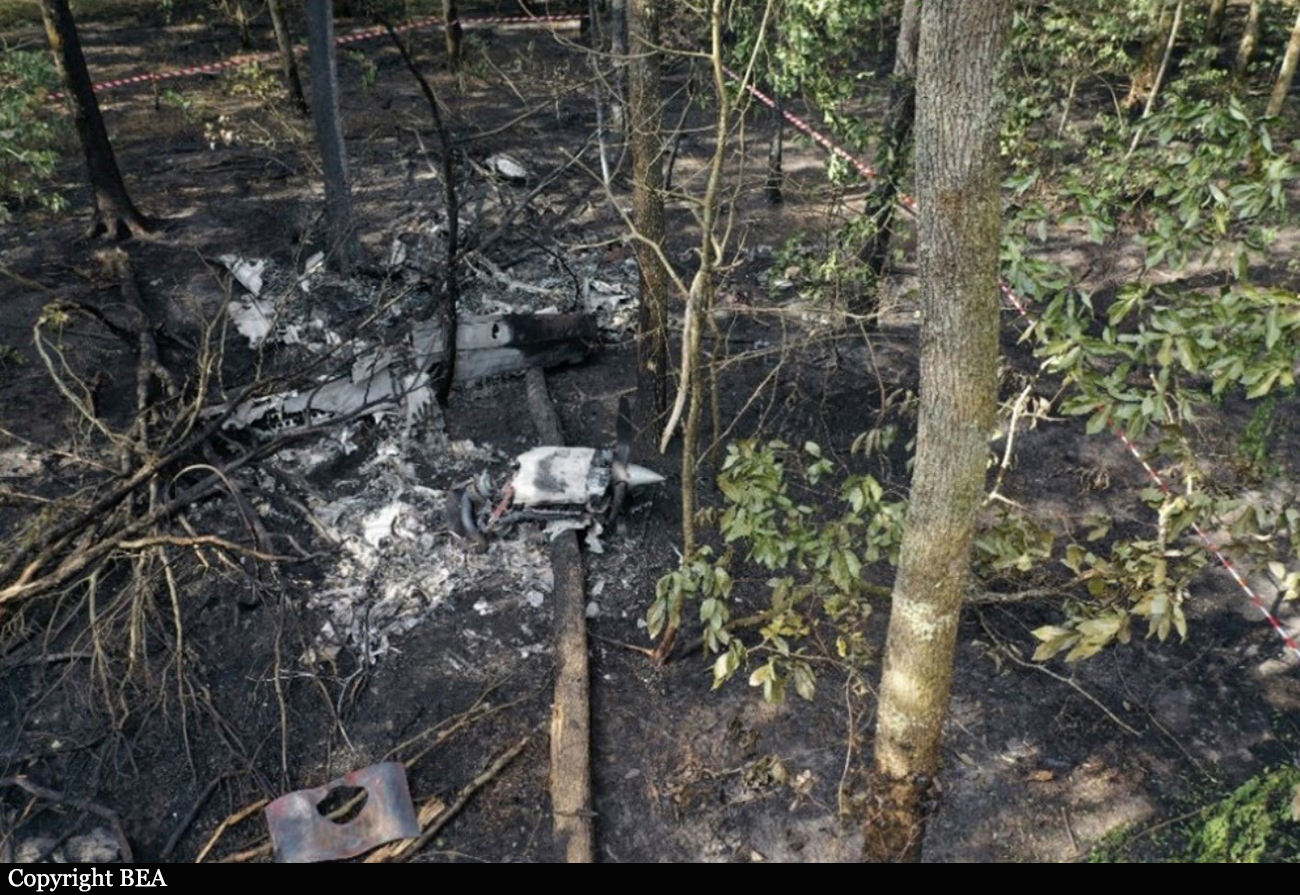
Crash of a Grumman S-2 Tracker in Générac: 1 killed
Date & Time:
Aug 2, 2019 at 1718 LT
Registration:
F-ZBAA
Survivors:
No
Schedule:
Nîmes - Nîmes
MSN:
456
YOM:
1958
Flight number:
Pélican 22
Crew on board:
1
Crew fatalities:
Pax on board:
0
Pax fatalities:
Other fatalities:
Total fatalities:
1
Captain / Total hours on type:
830.00
Aircraft flight hours:
15050
Circumstances:
The pilot, sole on board, departed Nîmes-Garons Airport at 1648LT on a fire fighting mission over Générac, a village located about 5 km southwest of the airbase. While approaching the zone to be treated, the twin engine airplane struck trees and crashed, bursting into flames. The aircraft was destroyed by impact forces and a post crash fire and the pilot was killed. At the time of the accident, the visibility was reduced due to thick smoke.
Probable cause:
The following findings were identified:
- GASC (Groupement d’avions de la sécurité civile) has a small resource of Tracker pilots;
- Without a co-pilot, the pilot is deprived of the usual cross-checking of piloting decisions and actions;
- The pilot has little experience on established firefighting missions. He has never carried out a mission of this nature in a single-pilot aircraft;
- Certain limitations of the flight envelope are unknown to pilots, particularly at high weight and in steep turns;
- Pilots have little knowledge of the aerological phenomena associated with certain fires, and the associated turbulence;
- With the implementation of the Tracker withdrawal, pilots are concerned about their future within the GASC;
- Fatigued from sustained activity, the pilot had a false understanding of the situation;
- The pilot suffered from overconfidence;
- The pilot did not perceive the terrain. He flew a little low as he approached the hill ;
- He adopted a trajectory very close to the flame front and did not anticipate the risk of turbulence;
- Focused on a dwelling to protect, he did not detect the inappropriate altitude of his plane and maintained a strong bank;
- The left wing underwent a local stall causing a steep left bank, which caused the pilot to recover the aircraft too low in relation to the height of the trees, which he had a false idea of.
- GASC (Groupement d’avions de la sécurité civile) has a small resource of Tracker pilots;
- Without a co-pilot, the pilot is deprived of the usual cross-checking of piloting decisions and actions;
- The pilot has little experience on established firefighting missions. He has never carried out a mission of this nature in a single-pilot aircraft;
- Certain limitations of the flight envelope are unknown to pilots, particularly at high weight and in steep turns;
- Pilots have little knowledge of the aerological phenomena associated with certain fires, and the associated turbulence;
- With the implementation of the Tracker withdrawal, pilots are concerned about their future within the GASC;
- Fatigued from sustained activity, the pilot had a false understanding of the situation;
- The pilot suffered from overconfidence;
- The pilot did not perceive the terrain. He flew a little low as he approached the hill ;
- He adopted a trajectory very close to the flame front and did not anticipate the risk of turbulence;
- Focused on a dwelling to protect, he did not detect the inappropriate altitude of his plane and maintained a strong bank;
- The left wing underwent a local stall causing a steep left bank, which caused the pilot to recover the aircraft too low in relation to the height of the trees, which he had a false idea of.
Final Report:




